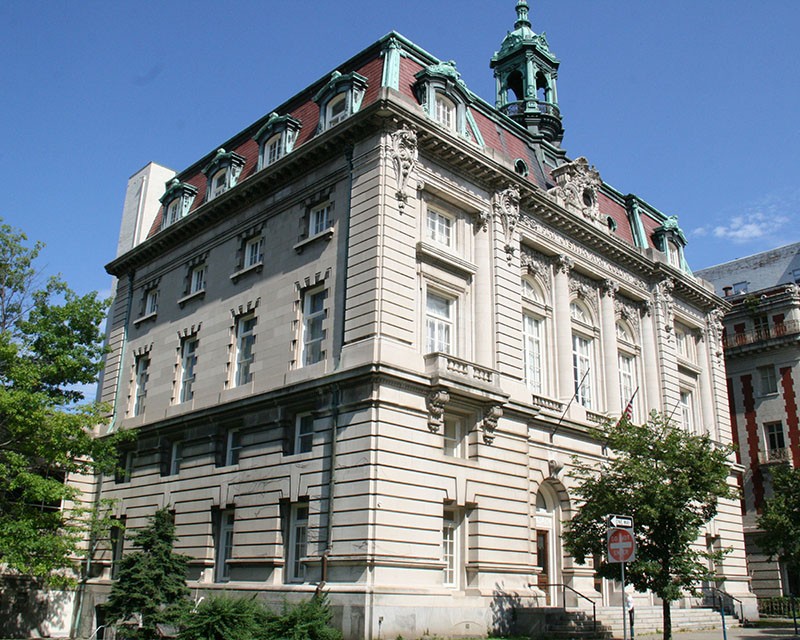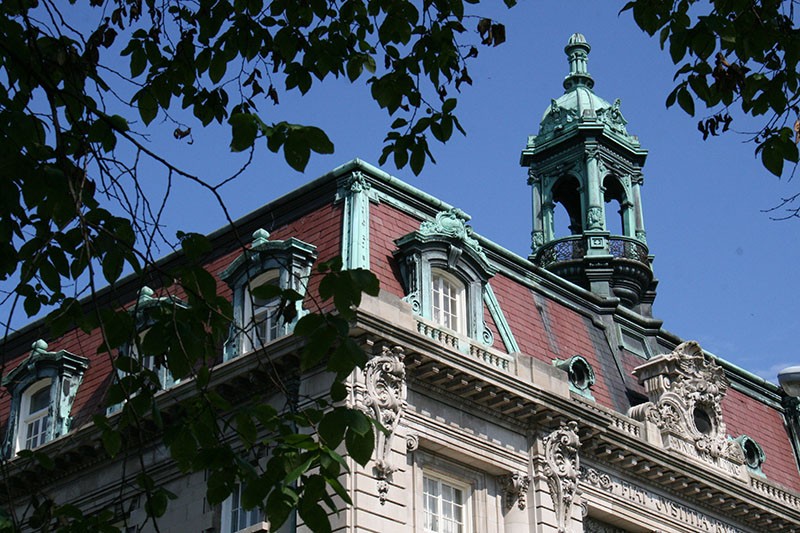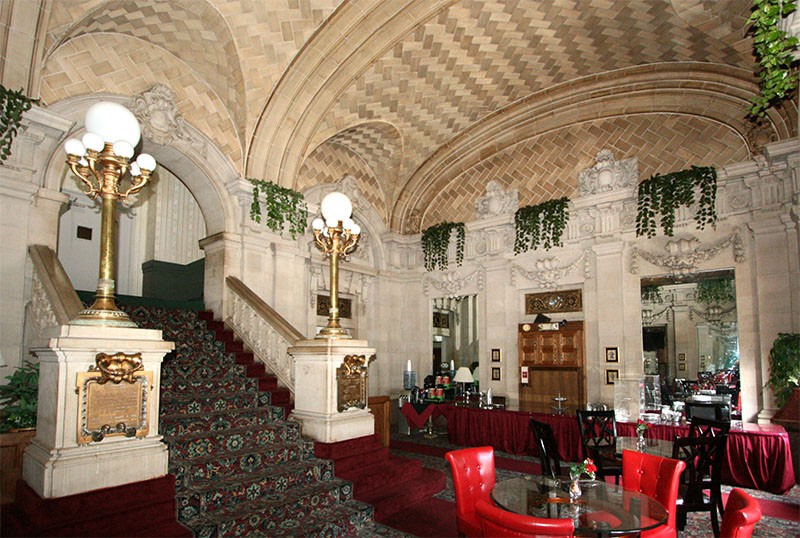Binghamton City Hall
Introduction
Text-to-speech Audio
Images
Binghamton City Hall


Interior lobby area.

Backstory and Context
Text-to-speech Audio
Built in 1897, Binghamton City Hall was designed by New York City architect Raymond Francis Almirall. Built in the distinctive “Ecole des Beaux Arts,” or “Hotel de Ville” style, the building stands as a landmark in Binghamton's Courthouse Square.
Characteristic of the style are bold sculptural features, deep cornices, a raised first story, a grand entrance and staircase, arched windows and doors, symmetry and classical details. Of special interest is the ornate copper clad cupola that stands majestically above the Collier Street entrance in perfect complement to the nearby County Court House dome.
The original entrance opened to an impressive vestibule. A marble staircase once led to another hexagonal iron staircase at the center of the structure which spiraled around an open elevator shaft. Above the vestibule was a two-story Council Chamber Room, its ornate walls covered with portraits of Binghamton Mayors through the years. An equally large court room was on the floor above.
In 1972, City offices relocated and Binghamton’s Beaux Arts masterpiece sat empty. The following year it was added to the National Register of Historic Places. 10 years later the building was purchased and renovated into a hotel.
In 2013 the building closed and remains vacant today.
